CHC22 clathrin mediates traffic from early secretory compartments for human GLUT4 pathway biogenesis
- PMID: 31863584
- PMCID: PMC7039200
- DOI: 10.1083/jcb.201812135
CHC22 clathrin mediates traffic from early secretory compartments for human GLUT4 pathway biogenesis
Abstract
Glucose transporter 4 (GLUT4) is sequestered inside muscle and fat and then released by vesicle traffic to the cell surface in response to postprandial insulin for blood glucose clearance. Here, we map the biogenesis of this GLUT4 traffic pathway in humans, which involves clathrin isoform CHC22. We observe that GLUT4 transits through the early secretory pathway more slowly than the constitutively secreted GLUT1 transporter and localize CHC22 to the ER-to-Golgi intermediate compartment (ERGIC). CHC22 functions in transport from the ERGIC, as demonstrated by an essential role in forming the replication vacuole of Legionella pneumophila bacteria, which requires ERGIC-derived membrane. CHC22 complexes with ERGIC tether p115, GLUT4, and sortilin, and downregulation of either p115 or CHC22, but not GM130 or sortilin, abrogates insulin-responsive GLUT4 release. This indicates that CHC22 traffic initiates human GLUT4 sequestration from the ERGIC and defines a role for CHC22 in addition to retrograde sorting of GLUT4 after endocytic recapture, enhancing pathways for GLUT4 sequestration in humans relative to mice, which lack CHC22.
© 2019 Camus et al.
Figures
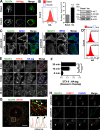

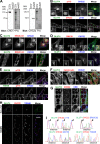
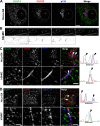
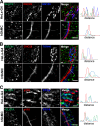
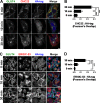
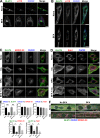
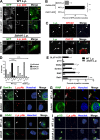


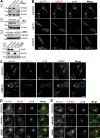
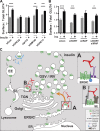
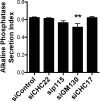
Similar articles
-
CHC22 clathrin recruitment to the early secretory pathway requires two-site interaction with SNX5 and p115.EMBO J. 2024 Oct;43(19):4298-4323. doi: 10.1038/s44318-024-00198-y. Epub 2024 Aug 19. EMBO J. 2024. PMID: 39160272 Free PMC article.
-
The CHC22 clathrin-GLUT4 transport pathway contributes to skeletal muscle regeneration.PLoS One. 2013 Oct 30;8(10):e77787. doi: 10.1371/journal.pone.0077787. eCollection 2013. PLoS One. 2013. PMID: 24204966 Free PMC article.
-
CHC22 and CHC17 clathrins have distinct biochemical properties and display differential regulation and function.J Biol Chem. 2017 Dec 22;292(51):20834-20844. doi: 10.1074/jbc.M117.816256. Epub 2017 Nov 2. J Biol Chem. 2017. PMID: 29097553 Free PMC article.
-
Building GLUT4 Vesicles: CHC22 Clathrin's Human Touch.Trends Cell Biol. 2020 Sep;30(9):705-719. doi: 10.1016/j.tcb.2020.05.007. Epub 2020 Jun 30. Trends Cell Biol. 2020. PMID: 32620516 Review.
-
GLUT4 Storage Vesicles: Specialized Organelles for Regulated Trafficking.Yale J Biol Med. 2019 Sep 20;92(3):453-470. eCollection 2019 Sep. Yale J Biol Med. 2019. PMID: 31543708 Free PMC article. Review.
Cited by
-
Derangement of Metabolic and Lysosomal Gene Profiles in Response to Dexamethasone Treatment in Sarcoidosis.Front Immunol. 2020 May 12;11:779. doi: 10.3389/fimmu.2020.00779. eCollection 2020. Front Immunol. 2020. PMID: 32477331 Free PMC article.
-
Golgi-Bypass Is a Major Unconventional Route for Translocation to the Plasma Membrane of Non-Apical Membrane Cargoes in Aspergillus nidulans.Front Cell Dev Biol. 2022 Apr 7;10:852028. doi: 10.3389/fcell.2022.852028. eCollection 2022. Front Cell Dev Biol. 2022. PMID: 35465316 Free PMC article.
-
Structure, function and regulation of mammalian glucose transporters of the SLC2 family.Pflugers Arch. 2020 Sep;472(9):1155-1175. doi: 10.1007/s00424-020-02411-3. Epub 2020 Jun 26. Pflugers Arch. 2020. PMID: 32591905 Free PMC article. Review.
-
Diabetes is accompanied by changes in the levels of proteins involved in endosomal GLUT4 trafficking in obese human skeletal muscle.Endocrinol Diabetes Metab. 2022 Sep;5(5):e361. doi: 10.1002/edm2.361. Epub 2022 Aug 14. Endocrinol Diabetes Metab. 2022. PMID: 35964329 Free PMC article.
-
GLUT4 On the move.Biochem J. 2022 Feb 11;479(3):445-462. doi: 10.1042/BCJ20210073. Biochem J. 2022. PMID: 35147164 Free PMC article.
References
Publication types
MeSH terms
Substances
Grants and funding
LinkOut - more resources
Full Text Sources
Other Literature Sources
Miscellaneous

